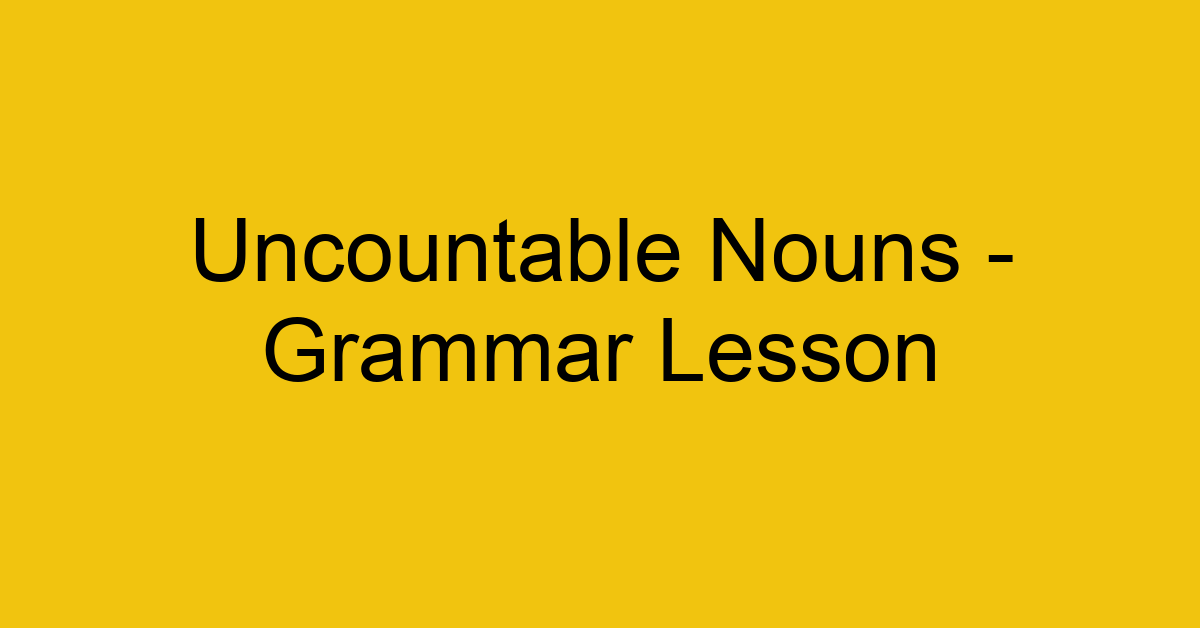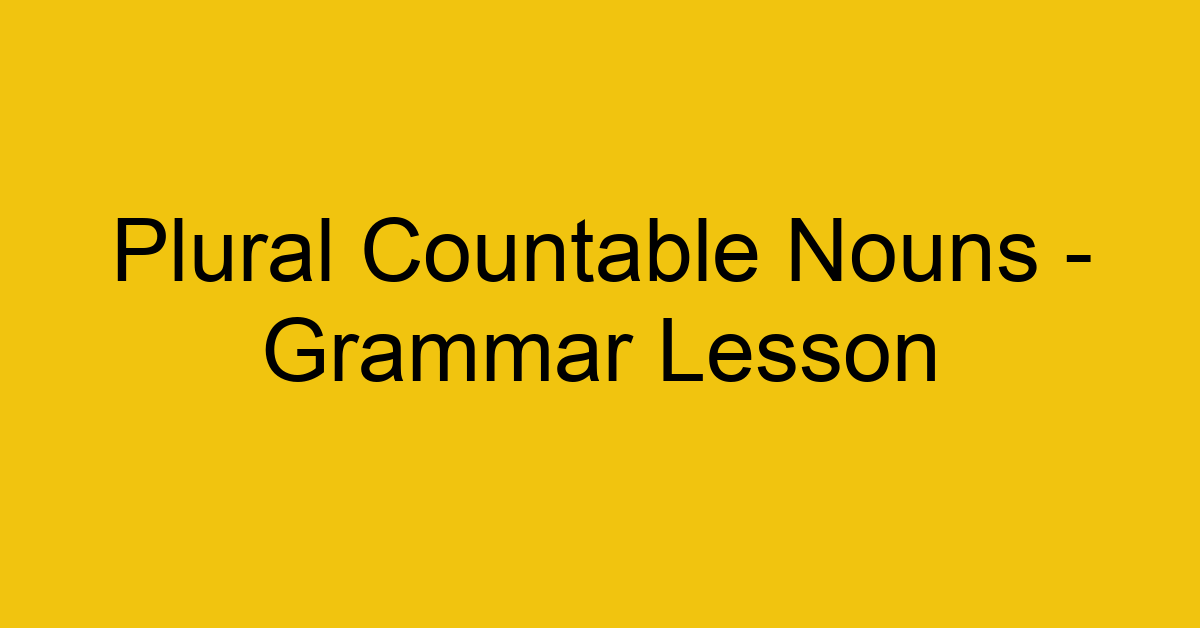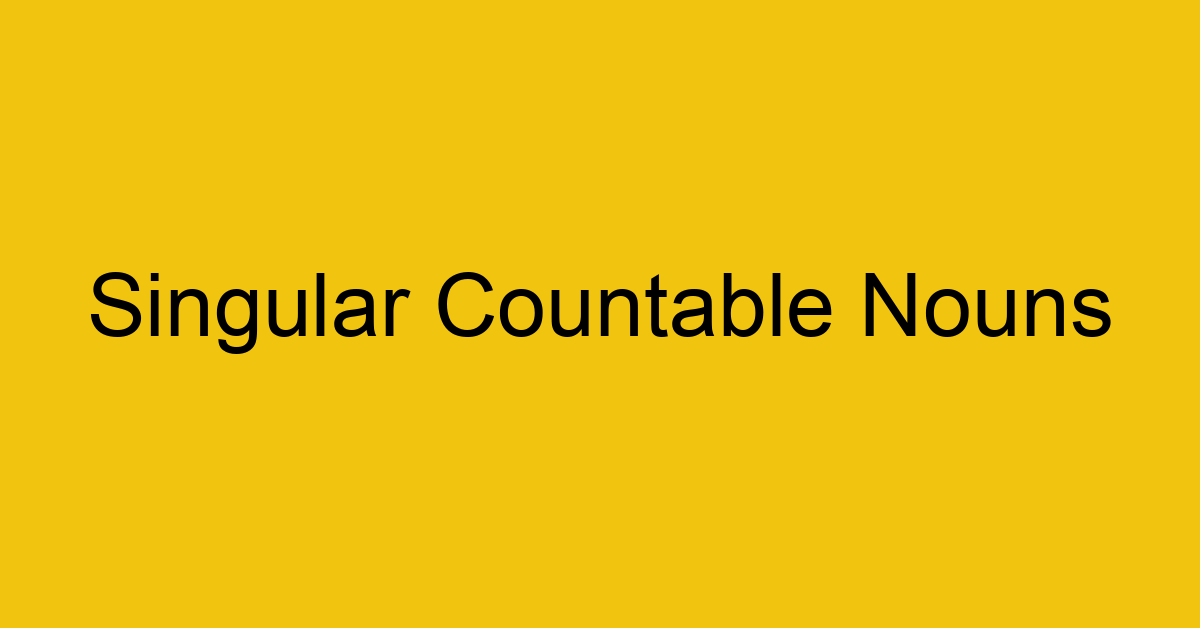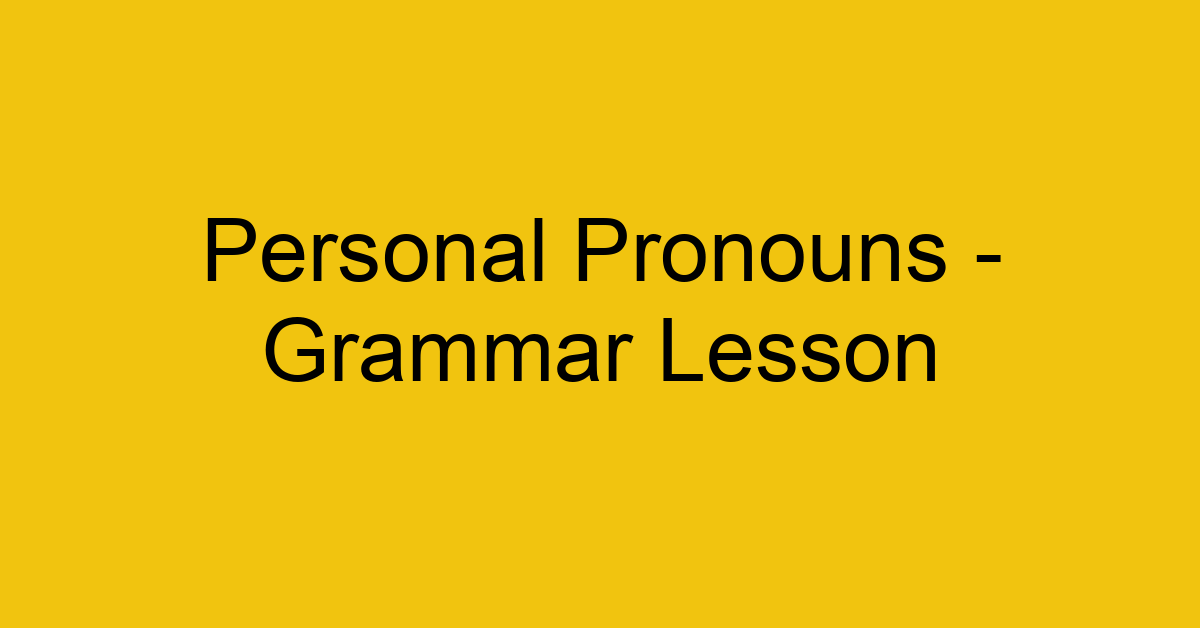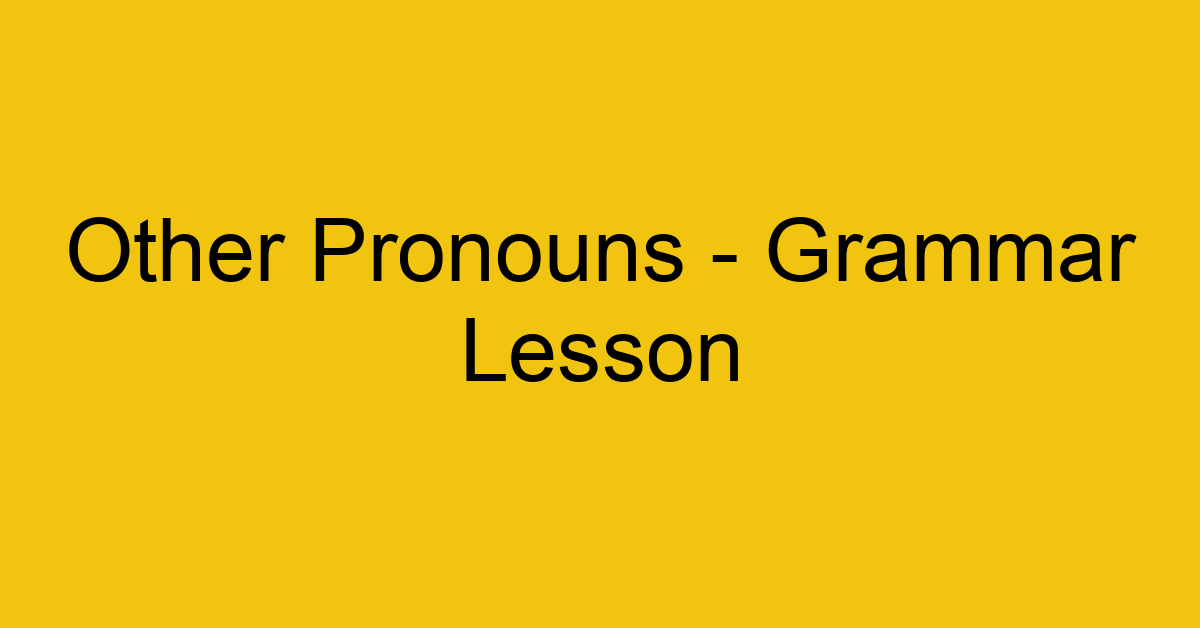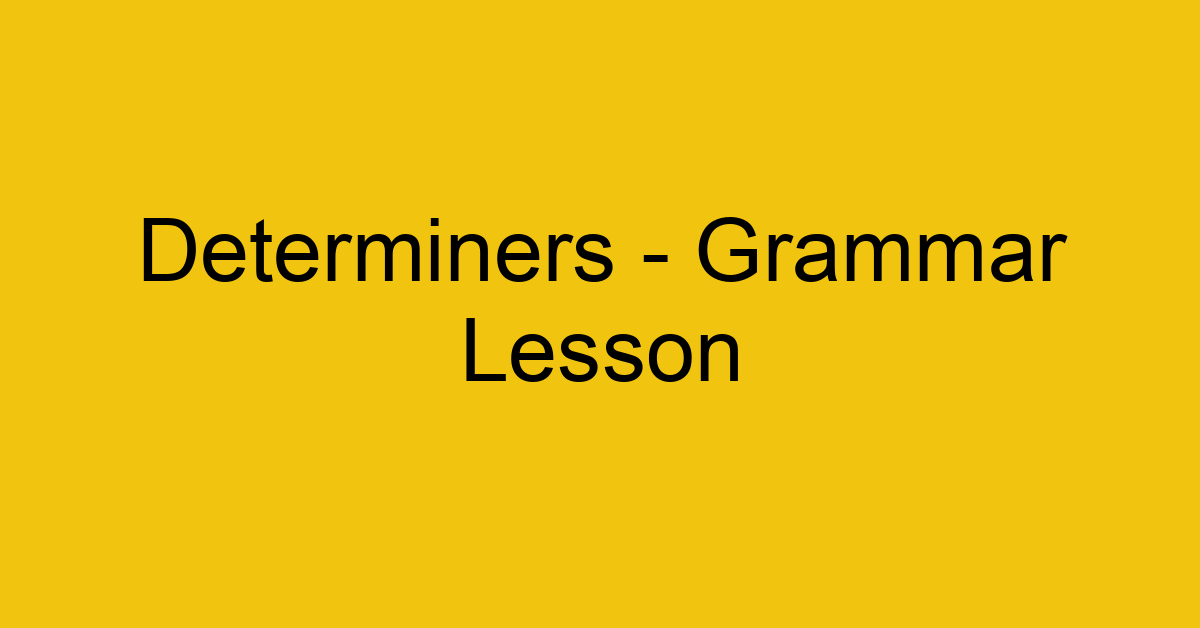CHAPTER 17. NOUNS INDICATING POSSESSION AND COMPOUND SUBJECTS
1. Ways in which possession is indicated
a. The ending ‘s
One way in which English nouns indicate possession is by means of the ending ‘s.
e.g. the boy’s hat
Sally’s bicycle
In the above examples, the ending ‘s indicates that the hat is possessed by the boy, and that the bicycle is possessed by Sally. The English ending ‘s is related to the German possessive ending es.
The ending ‘s is most often used with nouns referring to human beings or animals.
e.g. the child’s toy
the bird’s song
Nouns formed from two or more words joined by hyphens indicate possession by adding ‘s to the last word.
e.g. the runner-up’s score
the sister-in-law’s children
The ending ‘s may also used with nouns referring to non-living things which are sometimes thought of as if they were living, such as ships, countries, corporations, and the earth.
e.g. the ship’s bell
Italy’s exports
the city’s parks
the earth’s surface
The ending ‘s may also be used with nouns referring to units of time.
e.g. a day’s work
a week’s delay
In addition, the ending ‘s is used with nouns referring to non-living things in a few idioms such as the following:
e.g. a stone’s throw away
your money’s worth
It should be noted that the ending ‘s is used only with singular and plural nouns which do not end in s.
e.g. the girl’s hat
the children’s books
the men’s jackets
b. The ending s’
For plural nouns which end in s, the ending ‘s is not used. Instead, an apostrophe: ‘ is placed after the s which indicates a plural. The following examples illustrate how the plural nouns students and Smiths indicate possession.
e.g. the students’ books
the Smiths’ house
In these examples, the apostrophes indicate that the books belong to the students, and that the house belongs to the Smiths.
It should be noted that both ‘s and s’ are pronounced like s. Thus, in spoken English, there is no distinction between a singular noun with the ending ‘s and a plural noun ending in s’. For instance, the phrase the student’s books is pronounced in the same way as the phrase the students’ books.
In American English, singular nouns ending in s can also indicate possession by means of a final apostrophe.
e.g. James’ scarf
Dickens’ novels
In these examples, a final apostrophe is used with the singular proper nouns James and Dickens to indicate possession.
See Exercises 1 and 2.
c. Phrases beginning with Of
When the possessor is not a human being or animal, possession is often indicated by the use of a phrase beginning with of following the name of the thing possessed. A phrase beginning with of is most commonly used when the thing possessed is an abstract quality, such as size. This means of indicating possession is related to the method used in French, and may be the result of the influence of French on the English language.
e.g. the size of the portrait
the color of the carpet
the beginning of the story
See Exercise 3.
d. Two consecutive nouns
When the possessor and the thing possessed are both concrete objects, possession can often be indicated by placing the noun naming the possessor before the noun naming the thing possessed.
e.g. the car radio
the tree trunk
the kitchen sink
the onion skin
These examples indicate that the radio belongs to the car, the trunk belongs to the tree, the sink belongs to the kitchen, and the skin belongs to the onion. This type of construction will be discussed further in the section on Defining Adjectives.
2. Agreement of verbs with collective nouns and compound subjects
The following rules apply in formal English, but may or may not be observed in informal English.
a. Collective nouns
Collective nouns are singular nouns which refer to a group. The words audience, class, family, flock, group and team are examples of collective nouns.
A collective noun takes a singular verb when the group referred to acts as a whole or is considered as a whole.
e.g. Our team has won the game.
That family is well-known.
In the first example, the singular verb has won is used, since the collective noun team refers to a group acting as a whole. In the second example, the singular verb is is used, since the collective noun family refers to a group being considered as a whole.
However, a collective noun takes a plural verb when the members of the group are considered to be acting individually.
e.g. The flock were running, playing and searching for fresh grass.
The audience were throwing flowers and jewelry onto the stage.
In the first example, the use of the plural verb were running indicates that the members of the flock are considered to be acting individually. Similarly, in the second example, the use of the plural verb were throwing indicates that the members of the audience are considered to be acting individually.
b. Amounts considered as a whole
A noun subject naming a unit of currency or a unit of measurement takes a singular verb when the amount referred to is being considered as a whole.
e.g. Ten dollars is my best offer.
Five minutes is all that is required.
Two years is a long time.
In each of the above examples, the amount of money or length of time referred to by the subject is being considered as a whole. Thus, in each case a singular verb, is, is used.
See Exercise 4.
c. Compound subjects
When the subject of a verb consists of two or more nouns joined by and, or or nor, the subject can be referred to as a compound subject. In the following examples, the compound subjects are underlined.
e.g. Cars and buses were filling the streets.
One apple or one pear is needed.
Neither ducks nor pigeons were in the yard.
i. Compound subjects with And
A compound subject consisting of two nouns joined by the word and usually takes a plural verb. In the following examples, the compound subjects consist of various combinations of singular and plural nouns joined by the word and. In all of the examples, the compound subject with and takes a plural verb.
e.g. Red and white are my favorite colors.
One egg and one lemon are required to make the cake.
One teacher and twenty students are present.
Roses and tulips are blooming in the garden.
However, a compound subject with and takes a singular verb when the subject as a whole refers to only one thing, or is considered as referring to only one thing.
e.g. Our vice-president and treasurer is a person everyone likes.
Strawberries and cream is my favorite dessert.
In the first example, the use of the singular verb is indicates that the compound subject vice-president and treasurer refers to a single person. In the second example, the use of the singular verb is indicates that the compound subject strawberries and cream is being considered as referring to a single type of dessert.
Likewise, a compound subject with and takes a singular verb when the subject is the title of a book or the name of a company.
e.g. War and Peace is a long book.
Johnson and Sons is a company which sells musical instruments.
In each of the above examples a singular verb, is, is used, since the compound subject is the name of a single thing.
ii. Compound subjects with Or or Nor
When a compound subject consists of two or more nouns joined by the word or or nor, the verb agrees with the noun nearest the verb.
In the following examples the verbs are singular, since the nouns nearest the verbs are singular.
e.g. A bus or a streetcar passes this point every two minutes.
Neither my friend nor his brother knows what to do.
Cookies or cake is available.
Neither sardines nor salmon was served.
In the following examples the verbs are plural, since the nouns nearest the verbs are plural.
e.g. Sandals or slippers are suitable.
Neither pencils nor pens were provided.
Cake or cookies are available.
Neither salmon nor sardines were served.
When a compound subject consists of one singular noun and one plural noun joined by or or nor, it is sometimes considered advisable to place the plural noun directly before the verb, so that the verb will be plural.
e.g. A coat or two sweaters are needed.
Neither the teacher nor the students were there.
In these examples, the plural nouns sweaters and teachers have been placed immediately before the verbs, so that the verbs will be plural.
The following table summarizes the rules for the agreement of verbs with compound subjects:
| Nouns of Compound Subject | Conjunction | Verb |
| Nouns referring to a single thing | and | singular |
| Nouns referring to two or more things | and | plural |
| Singular noun nearest the verb | or/nor | singular |
| Plural noun nearest the verb | or/nor | plural |
See Exercise 5.
d. Nouns followed by descriptive phrases
Two or more nouns can form a compound subject when joined by and, or or nor. However, when a noun subject is followed by a descriptive phrase containing another noun, the two nouns do not form a compound subject. In this case, the verb must agree with the noun subject, not with the noun in the descriptive phrase.
In the following examples, the subjects of the verbs are printed in bold type, and the descriptive phrases following the subjects are underlined.
e.g. One book, larger than the others, was lying open on the desk.
The leader of the students was an excellent speaker.
My friend, as well as her sisters, is here.
In the above examples, the verbs was lying, was and is are singular, to agree with the singular subjects book, leader and friend. The descriptive phrases larger than the others, of the students and as well as her sisters have no effect on which form of the verb is used.
See Exercise 6.
EXERCISES for Chapter 17
- For each of the following phrases, change the noun indicating possession from the singular to the plural. For example:
the man’s experiences
the men’s experiences
the doctor’s office
the doctors’ office
- the musician’s instruments
- the child’s adventures
- the animal’s habitat
- the workman’s instructions
- the ship’s passengers
- the pilot’s vacation
- the officer’s friends
- For each of the following phrases, change the noun indicating possession from the plural to the singular. For example:
the owners’ permission
the owner’s permission
the mice’s nest
the mouse’s nest
- the surgeons’ skill
- the policemen’s warning
- the directors’ decision
- the secretaries’ correspondence
- the eagles’ aerie
- the women’s errand
- the managers’ assistants
-
Show the relationships between the possessors and the things possessed by using the ending ‘s or the word of, as appropriate. For example:
| Possessor | Thing Possessed | Indicating Possession | |
| visitor | map | the visitor’s map | |
| stairs | top | the top of the stairs | |
| 1. | woman | scarf | |
| 2. | children | answers | |
| 3. | door | color | |
| 4. | concert | beginning | |
| 5. | instructor | advice | |
| 6. | deficit | size | |
| 7. | girl | tricycle | |
| 8. | building | height | |
| 9. | hen | cackling | |
| 10. | boy | parents | |
| 11. | chair | arm | |
| 12. | street | length |
- For each of the following sentences, fill in the blank with either the singular or the plural verb form shown in brackets. Be prepared to explain why the form you have chosen is correct. For example:
The committee ____ put forward a new proposal. (has, have)
The committee has put forward a new proposal.
In this example the committee is acting as a whole. Therefore a singular verb is used.
The committee ____ disagreed on what policy to adopt. (has, have)
The committee have disagreed on what policy to adopt.
In this example, the members of the committee are acting as individuals. Therefore a plural verb is used.
Two tons of coal __ required. (is, are)
Two tons of coal is required.
In this example, the amount two tons is considered as a whole. Therefore a singular verb is used.
- The crew ______ preparing the ship to go to sea. (is, are)
- The crew ______ different levels of experience. (has, have)
- Two pounds of butter _____ too much. (is, are)
- The class _____ not agree on what should be done. (does, do)
- The class _____ contributed eighty dollars to the cause. (has, have)
- Three ounces of gold _____ worth more than three ounces of copper. (is, are)
- The group _____ decided to hold a meeting once a month. (has, have)
- The group _____ varied backgrounds. (has, have)
- Fifty cents _____ the regular price. (was, were)
- Six dollars _____ been collected. (has, have)
-
For each of the following sentences, fill in the blank with either the singular or the plural verb form shown in brackets. Be prepared to explain why the form you have chosen is correct. For example:
Both the sky and the water ___ blue. (is, are)
Both the sky and the water are blue.
The two nouns of a compound subject with and refer to two different things. Therefore a plural verb is used.
Wilson and Brothers __ a company dealing in antiques. (is, are)
Wilson and Brothers is a company dealing in antiques.
The two nouns of a compound subject with and refer to one thing. Therefore a singular verb is used.
Either Richard or his uncle __ sure to be there. (is, are)
Either Richard or his uncle is sure to be there.
A singular noun is nearest the verb in a compound subject with or. Therefore a singular verb is used.
Neither the main office nor the branch offices ___ open. (is, are)
Neither the main office nor the branch offices are open.
A plural noun is nearest the verb in a compound subject with nor. Therefore a plural verb is used.
- Either a large jar or two small jars _____ required. (is, are)
- Neither the road nor the highway ______ to Pictou. (leads, lead)
- A duck and a heron _____ in the pond. (is, are)
- Either spring or summer _____ a good time to visit our region. (is, are)
- Both the bow and the arrows ______ to the instructor. (belongs, belong)
- Neither the boats nor the raft _____ in good repair. (was, were)
- Milk and porridge _____ a nutritious breakfast. (is, are)
- Either his brother or his sister ______ here. (lives, live)
- Both boys and girls _____ eligible to apply. (is, are)
- Neither threats nor persuasion _____ proved effective. (has, have)
- Bread and potatoes _____ staple foods in many parts of North America. (is, are)
- Either the twins or their friend _____ in the class. (is, are)
13. The Picts and the Martyrs _____ a book I would like to read again. (is, are) - Both feathers and fur ______ to keep animals warm. (helps, help)
- Rope or string _____ required. (is, are)
- Either plates or saucers _____ suitable. (is, are)
- Smith and Smith _____ a family business. (is, are)
- Neither the apples nor the plums _____ ripe. (was, were)
-
For each of the following sentences, place brackets around the phrase which describes the noun subject. Then, using the Simple Present tense, fill in the blank with the correct form of the verb shown in brackets. For example:
The tools, including the hammer, ___ made of iron. (to be)
The tools, [including the hammer,] are made of iron.
The ferry, as well as the other boats, ___ at anchor. (to be)
The ferry, [as well as the other boats,] is at anchor.
- The letter, as well as the postcards, _____ on the table. (to be)
- The windows at the front of the house _____ to be repaired. (to need)
- His friends, as well as his sister, _____ about to leave. (to be)
- The meadow, filled with flowers, _____ a beautiful sight. (to be)
- The children in the class _____ eager to learn. (to be)
- The kettle, in contrast to the saucepans, _____ pitch black. (to be)
- The books, although purchased only last year, already _____ worn. (to look)
- The leader of the musicians _____ responsible for the arrangements. (to be)
- The table, together with the chairs, _____ quite old. (to be)
- The members of the club ________ attending the meetings. (to enjoy)
ANSWERS TO THE EXERCISES for Chapter 17
Answers to Exercise 1:
1. the musicians’ instruments 2. the children’s adventures 3. the animals’ habitat 4. the workmen’s instructions 5. the ships’ passengers 6. the pilots’ vacation 7. the officers’ friends
Answers to Exercise 2:
1. the surgeon’s skill 2. the policeman’s warning 3. the director’s decision 4. the secretary’s correspondence 5. the eagle’s aerie 6. the woman’s errand 7. the manager’s assistants
Answers to Exercise 3:
1. the woman’s scarf 2. the children’s answers 3. the color of the door 4. the beginning of the concert 5. the instructor’s advice 6. the size of the deficit 7. the girl’s tricycle 8. the height of the building 9. the hen’s cackling 10. the boy’s parents 11. the arm of the chair 12. the length of the street
Answers to Exercise 4:
1. is [acting as a whole] 2. have [considered individually] 3. is [considered as a whole] 4. do [acting individually] 5. has [acting as a whole] 6. is [considered as a whole] 7. has [acting as a whole] 8. have [considered individually] 9. was [considered as a whole] 10. has [considered as a whole]
Answers to Exercise 5:
1. are [or: noun nearest the verb is plural] 2. leads [nor: noun nearest the verb is singular] 3. are [and: subject refers to more than one thing] 4. is [or: noun nearest the verb is singular] 5. belong [and: subject refers to more than one thing] 6. was [nor: noun nearest the verb is singular] 7. is [and: subject refers to a single type of breakfast] 8. lives [or: noun nearest the verb is singular] 9. are [and: subject refers to more than one thing] 10. has [or: noun nearest the verb is singular] 11. are [and: subject refers to more than one thing] 12. is [or: noun nearest the verb is singular] 13. is [and: title of a book] 14. help [and: subject refers to more than one thing] 15. is [or: noun nearest the verb is singular] 16. are [or: noun nearest the verb is plural] 17. is [and: name of a company] 18. were [nor: noun nearest the verb is plural]
Answers to Exercise 6:
1. The letter, [as well as the postcards,] is on the table. 2. The windows [at the front of the house] need to be repaired. 3. His friends, [as well as his sister,] are about to leave. 4. The meadow, [filled with flowers,] is a beautiful sight. 5. The children [in the class] are eager to learn. 6. The kettle, [in contrast to the saucepans] is pitch black. 7. The books, [although purchased only last year] already look worn. 8. The leader [of the musicians] is responsible for the arrangements. 9. The table, [together with the chairs,] is quite old. 10. The members [of the club] enjoy attending the meetings.
